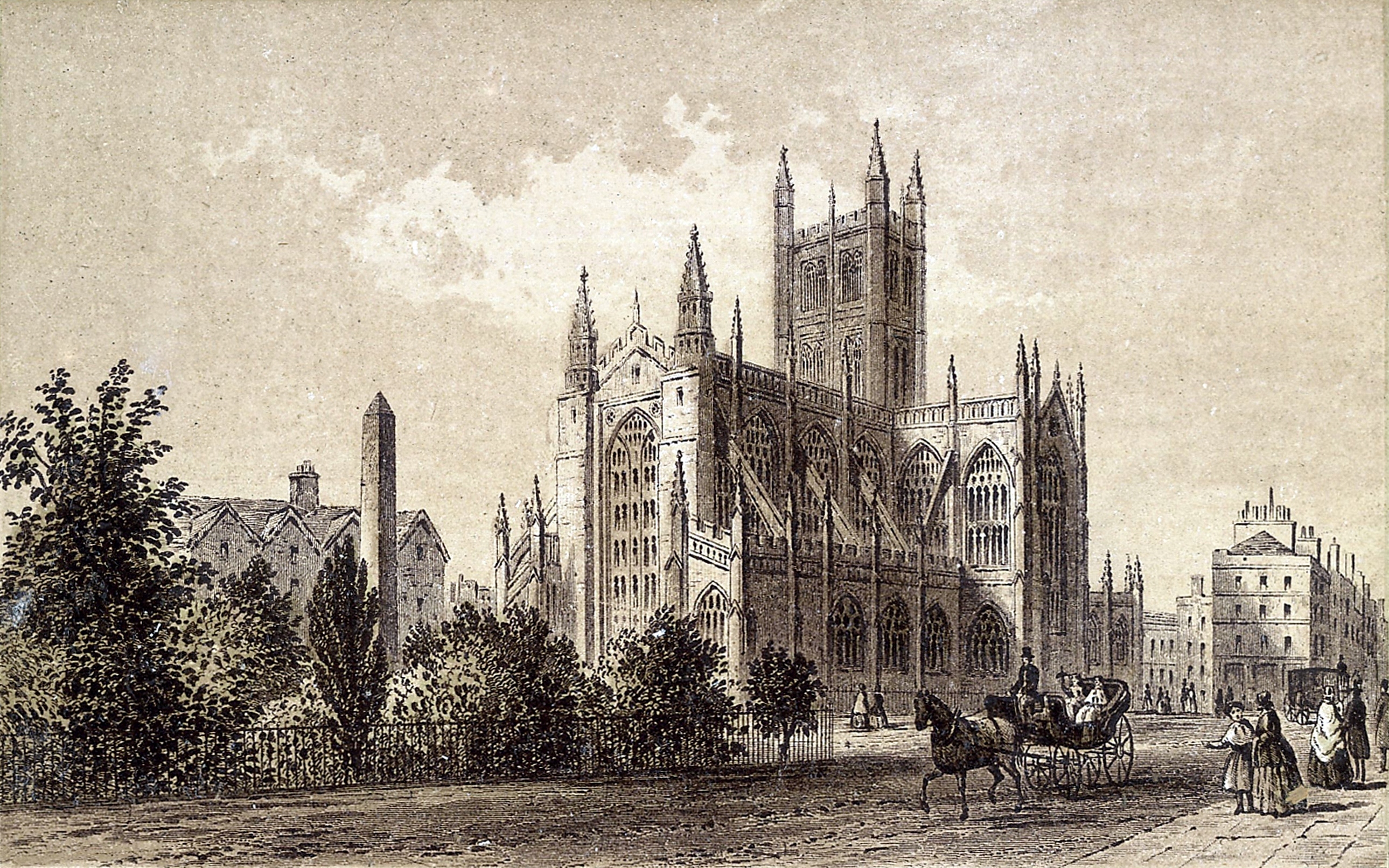All AP Art History Resources
Example Questions
Example Question #1 : Understanding Terminology That Describes Gothic Architecture

The supports visible on the side of the building are known as ______________.
stilts
latticework
flying buttresses
gargoyles
flying buttresses
A key feature of Gothic churches is their height. The supports on the sides were added to prevent structural problems. Known as "flying butresses", these supports were transformed from simple structural elements into elaborate ornamentation.
Example Question #871 : Ap Art History
Gothic cathedrals typically have all of the following architectural features EXCEPT __________.
flying buttresses
vaulted arches
rose windows
domed ceilings
domed ceilings
"Gothic" architecture describes the dominant forms in Western European architecture from about the twelfth century to the sixteenth century. Gothic cathedrals are monumental in scale and scope, structured around buildings that are cross-shaped when viewed from above, and feature lots of ornamentation and design elements, including vaulted arches, statuary, rose windows, flying buttresses, and grand columns.
Example Question #2 : Understanding Terminology That Describes Gothic Architecture
Flying buttresses were a common feature of church architecture in which style?
Modern
Greco-Roman
Art Nouveau
Neoclassical
Gothic
Gothic
Flying buttresses are ornate supports that stick outside the walls of Gothic church architecture, particularly cathedrals. Buttresses were necessary to keep the new, massive stone cathedrals of the middle ages standing. While they were originally functional, church builders made them reflect and enhance the design of their buildings.
Example Question #1 : Understanding Terminology That Describes Gothic Architecture
Ogee arches are characteristic of which period of Gothic architecture?
Rayonannt
High
Early
Flamboyant
Flamboyant
The Flamboyant (or Late) period of Gothic architecture contains a combination of tracery and ogee arches. "Flamboyant," from the French word for flaming, denotes its highly decorative style.
Example Question #1 : 3 D Visual Art
A statue of a small grotesque figure that adorns a gothic building is called __________.
a buttress
a redoubt
a keystone
a gargoyle
a turret
a gargoyle
Gothic architecture, particularly in the building of churches and cathedrals, featured a number of ornate features. One of the most peculiar was the use of gargoyles, small stone figures of grotesque characters that were placed on the sides of buildings. These figures would often be placed between sculptures of saints and kings, and were viewed as protective features. Some gargoyles also functioned as drainage pipes (through holes in their mouths).
Example Question #1 : Understanding Terminology That Describes Gothic Architecture
Which type of arch commonly seen in Gothic architecture is wider than it is tall and has a flattened appearance?
The depressed arch
The flamboyant arch
The lancet arch
None of the other answers
The Italian arch
The depressed arch
The depressed arch was much different from the other arches found in Gothic architecture. It was designed to look as though it had been flattened by a great pressure, and was very wide. There is no such thing as an Italian arch.
Example Question #873 : Ap Art History
Gothic architecture introduced which of the following architectural attributes?
Semi-circular arches
The flying buttress
Stained glass
Groin vaults
Deliberately incomplete architectural elements
The flying buttress
Stained glass, semi-circular arches, and groin vaults are all contributions of the Romanesque architectural movement, which preceded Gothic architecture. Deliberately incomplete architectural elements are a feature of Baroque architecture. Gothic architecture is responsible for the flying buttress.
Example Question #1 : Understanding Terminology That Describes Gothic Architecture
This attribute is perhaps the most commonly known and appreciated of all the characteristics of Gothic architecture. It can be described as a series of grotesque sculptures often used as a decorative way to divert water away from a building.
Which attribute of Gothic architecture is the above paragraph describing?
Flamboyant arches
Gargoyles
Flying buttresses
Depressed arches
Vaulted ceilings
Gargoyles
Gargoyles, while used somewhat during the many centuries of medieval art and architecture, are most commonly thought of as a Gothic architectural attribute. While used for decoration, they also commonly had the function of diverting water from the building. Gargoyles were frequently monstrous and grotesque, because they were meant to strike fear into the peasants who saw them and motivate them to attend church.
Example Question #2 : Understanding Terminology That Describes Gothic Architecture
Which of the following is an accurate description of the "rose window" commonly seen in Gothic architecture?
A flower-shaped window decorated with ornate circular designs.
There is no such thing as a "rose window" in Gothic architecture.
A group of triangle windows arranged together to look like a flower.
A circular window divided by an intricate pattern, often like a wheel or flower.
A group of large, square windows that together form a triangle.
A circular window divided by an intricate pattern, often like a wheel or flower.
The "rose window," as seen in Gothic architecture, is large, circular, often centralized window, that is divided by an intricate pattern. Sometimes the window looks like a wheel, and other times it seems to resemble a flower; however, the window is never flower-shaped. It is always circular, but sometimes has a visible flower within.
Example Question #876 : Ap Art History
The presence of ___________ in the interior of Gothic cathedrals, churches, etc. was an important part of worship for the people of that time period, as it represented divinity, and the presence of God. It is for this reason that many Gothic cathedrals have very large windows.
Arches
None of these
Columns
Light
Gold
Light
Although arches, and, to come extent, columns and the use of gold were all stylistic choices of the Gothic period, the answer is "light," because light was more than a simple stylistic choice. Light was a representation of divinity, and the large amounts of interior light were important for worship.
All AP Art History Resources




